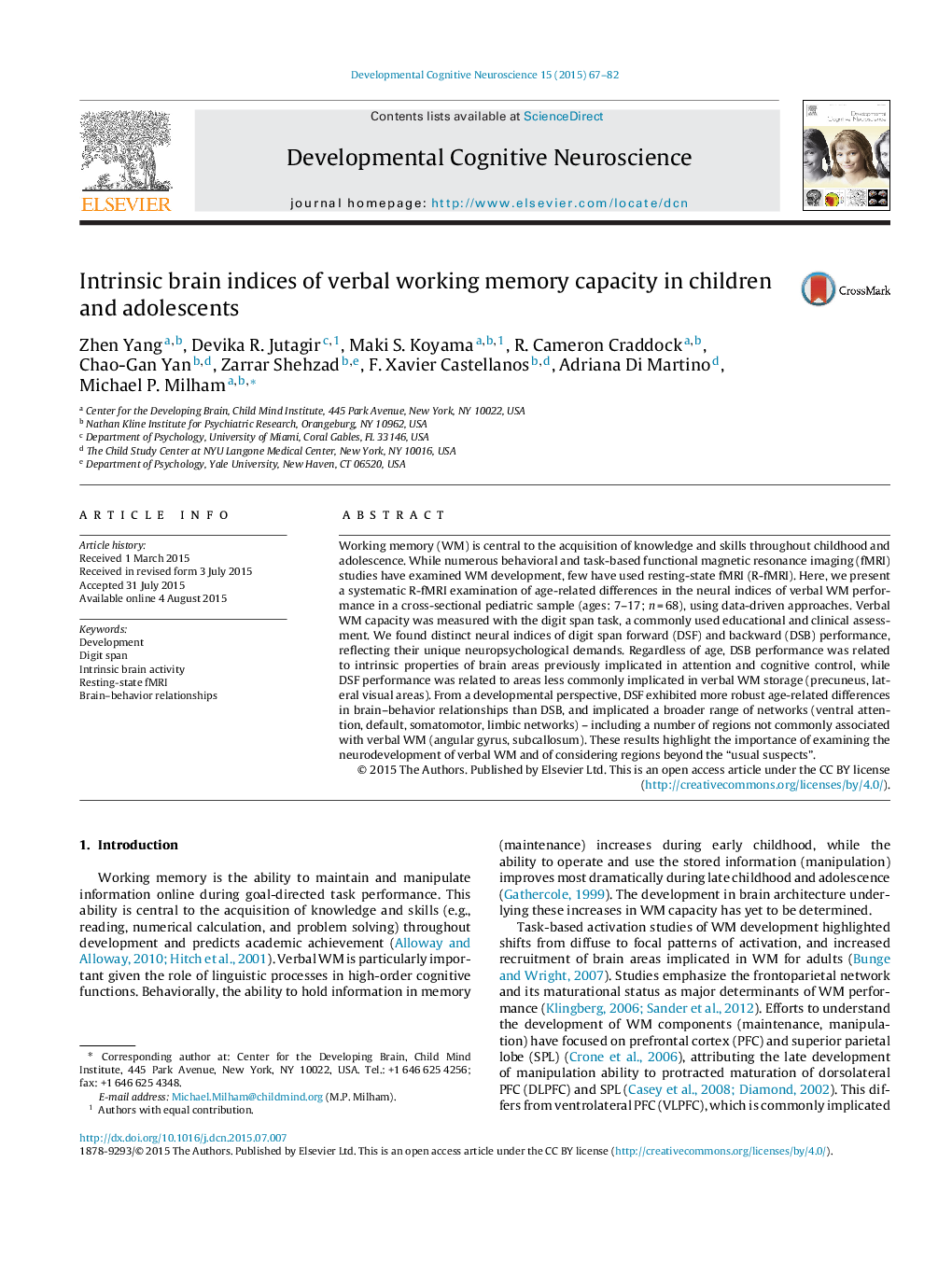| Article ID | Journal | Published Year | Pages | File Type |
|---|---|---|---|---|
| 4316544 | Developmental Cognitive Neuroscience | 2015 | 16 Pages |
•Digit span forward and backward performance has unique intrinsic neural correlates.•Dorsal anterior cingulate gyrus plays distinctive roles in forward and backward span.•Angular gyrus and subcallosum associated with forward digit span performance depending on age.•Visual cortex and ventrolateral PFC linked to backward digit span performance depending on age.•Age-related brain–behavior relationship changes are more robust for forward span.
Working memory (WM) is central to the acquisition of knowledge and skills throughout childhood and adolescence. While numerous behavioral and task-based functional magnetic resonance imaging (fMRI) studies have examined WM development, few have used resting-state fMRI (R-fMRI). Here, we present a systematic R-fMRI examination of age-related differences in the neural indices of verbal WM performance in a cross-sectional pediatric sample (ages: 7–17; n = 68), using data-driven approaches. Verbal WM capacity was measured with the digit span task, a commonly used educational and clinical assessment. We found distinct neural indices of digit span forward (DSF) and backward (DSB) performance, reflecting their unique neuropsychological demands. Regardless of age, DSB performance was related to intrinsic properties of brain areas previously implicated in attention and cognitive control, while DSF performance was related to areas less commonly implicated in verbal WM storage (precuneus, lateral visual areas). From a developmental perspective, DSF exhibited more robust age-related differences in brain–behavior relationships than DSB, and implicated a broader range of networks (ventral attention, default, somatomotor, limbic networks) – including a number of regions not commonly associated with verbal WM (angular gyrus, subcallosum). These results highlight the importance of examining the neurodevelopment of verbal WM and of considering regions beyond the “usual suspects”.
